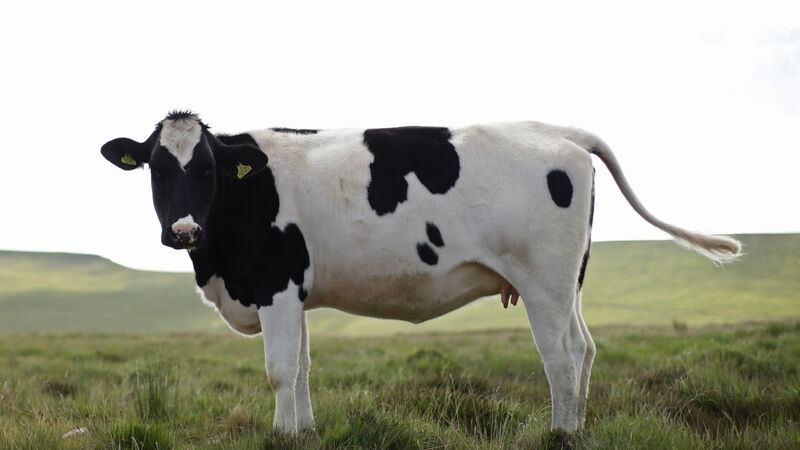Agricultural carbon emissions cut to be 25% 'at the very maximum'

Agriculture remains by far the largest contributor to Ireland's emissions, at 37.5% of the total, according to Thursday's EPA report. File picture: Yui Mok/PA
Cuts to agricultural carbon emissions will be 24% or 25% “at the very maximum”, despite Green Party demands they go to 30%.
Media reports at the weekend that a cut of 28% had been agreed have also been dismissed as “total nonsense”.
Senior Government sources with knowledge of the ongoing talks between Fianna Fáil, Fine Gael, and the Green Party, said the final position will exceed the minimum target of 22% but will be “nowhere near” the higher end.
Tensions between Agriculture Minister Charlie McConalogue and Green Party leader Eamon Ryan have already led to a delay in the emissions targets being agreed, but there is still hope within Government that it can be resolved before Wednesday’s last Cabinet meeting before the summer.
However, speaking to the , several senior Government figures have conceded that “kicking it back” until September is now a real possibility.
While Mr Ryan is demanding cuts of as close to 30% as possible, Fianna Fáil and Fine Gael ministers are insisting a deliverable figure which farmers will accept.
The sources said the binary debate about which percentage the reduction will be, is distracting from how it is all going to be delivered.
Mr McConalogue and the Fianna Fáil and Fine Gael ministers are adamant that farmers “need to be brought with us” while protecting the agri-food industry.
A lot of work has been done on seeking to incentivise farmers on increasing afforestation, utilising technology, and moving to alternative and decreased fertiliser usage, as well as decreasing slaughter age in a bid to tackle emissions, the sources said.
FA President Tim Cullinan has said that there are a lot of measures that can be implemented to reduce greenhouse emissions before the national herd has to be reduced.
The agriculture sector has to be protected, he told Newstalk Breakfast.
"If production is stabilised and technological advances are introduced then methane reduction targets could be reached.
"There are thousands of jobs “up and down the country” at risk as well as the economic and social fabric of the country," he warned.
“It’s going to be a costly thing” to achieve reduction targets. If a target of 30 percent was required that could cost 50,000 to 55,000 jobs and €40billion.
There were options to be considered, but if farmers were to introduce measures such as using renewable energy and other technological advances, then the agriculture sector would need to get credit for such savings, not other sectors, he said.
“If farmers are willing to invest in technology then they should get credit”.
Mr Cullinan said he believed changes to feed additives, using anaerobic digesters could all make a difference.
His job was to protect farmers, he said. The sector would work to reach emission reduction targets, but he did not like talking about “red lines”.
“We all have to play our part. Common sense has to prevail.”
Intensive talks are continuing ahead of the weekly meeting of the three Government leaders tomorrow, to decide whether it is ready to go to Cabinet or not.
One senior Government source said they cannot see this landing anywhere above 24% or 25% at “the very maximum”.
Yesterday, Mr McConalogue said he remains fully committed to achieving an overall reduction in carbon emissions of 51% by 2030.
He said the talks are “productive” and his goal is to minimise the emissions connected with the production of food, but while helping family farms produce that food.
A spokeswoman for Mr Ryan declined to comment.
CLIMATE & SUSTAINABILITY HUB












